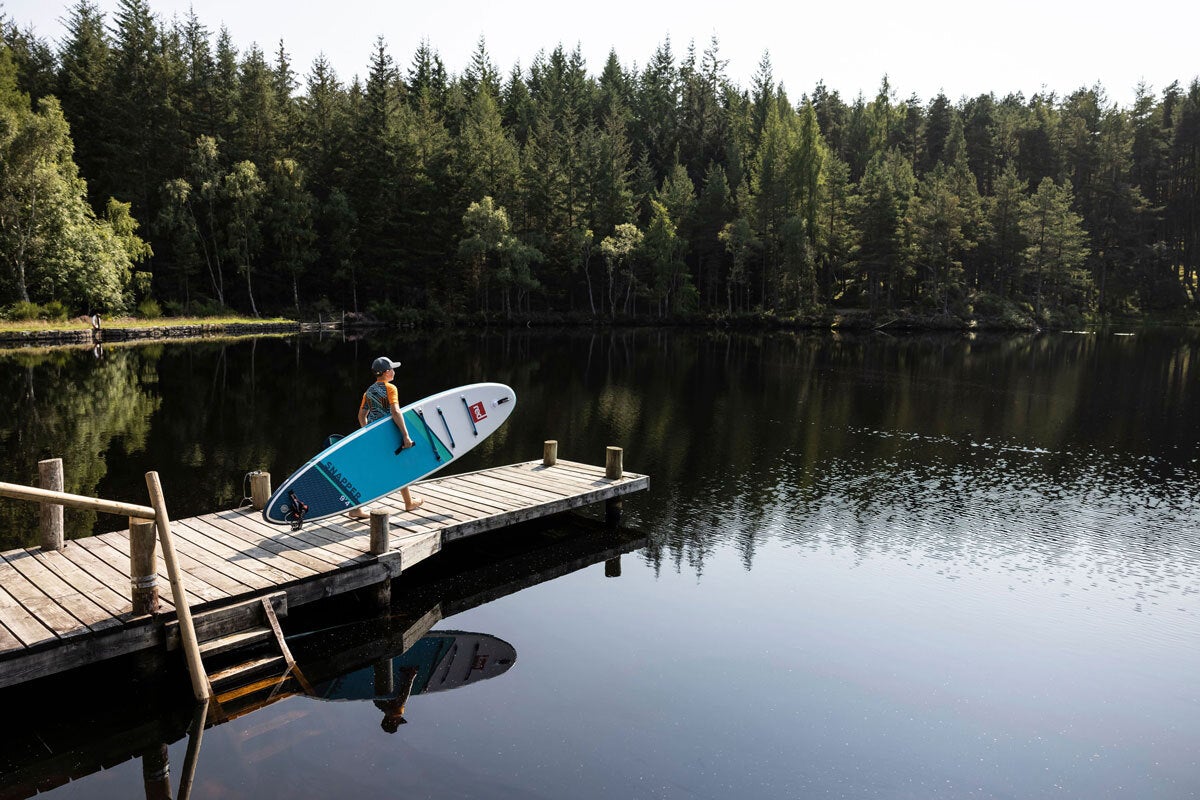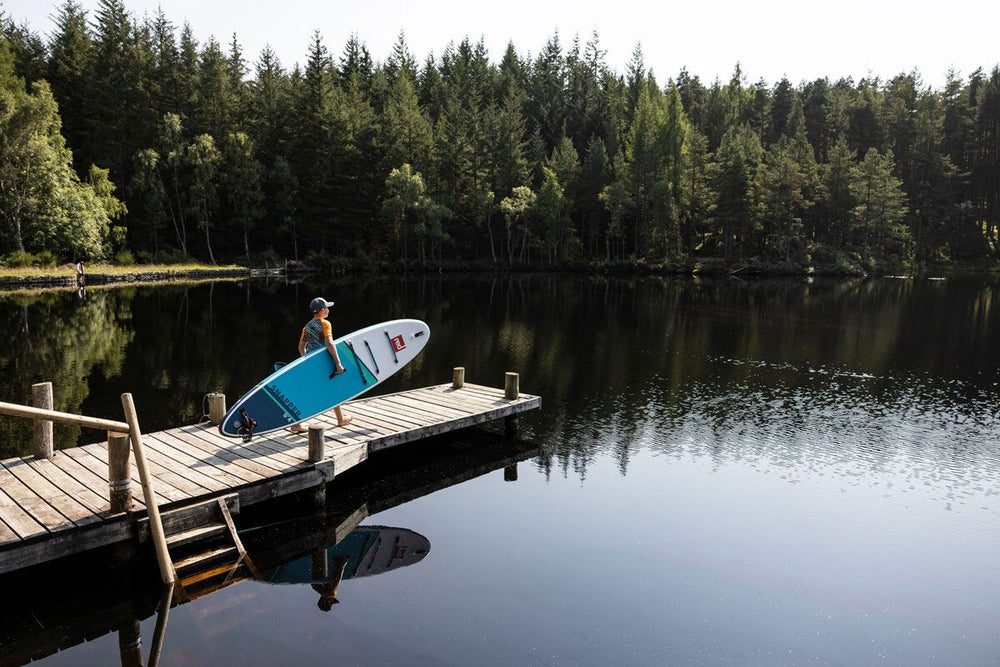
Red Paddle Co's Sup Safety Tips For Winter 2026
Here's our selection of essential SUP safety tips to help keep you safe on the water throughout winter.


Written by Catherine Morris /
Lakes are fantastic places to enjoy water sports and swimming, however they can be home to some hidden hazards. In order to enjoy your day out on the lake safely, it’s important that you keep in mind the following lake safety tips:
Plan Your Trip
Not all lakes will be safe or suitable for recreational purposes, and so an essential lake safety tip is to do some research before you head out to your chosen location. Where possible, it’s always preferable to swim where there is a lifeguard on duty. Check that the river is safe for your activity and assess the conditions once you arrive at the lake. Does it look clean? Can you see any immediate hazards? If you’re ever unsure about the safety of the lake, don’t go in.
Consider Cleanliness
Another crucial lake safety tip for swimming in lakes is to check how clean the lake is. One of the main risks to look out for is blue-green algae that can emerge in warm, still water over the summer. This can cause skin rashes and allergic reactions. It’s also fatal to dogs. A more serious concern is Weil’s disease. Whilst the risk of getting Weil’s disease is very low, you should always avoid stagnant water and cover cuts with waterproof dressings as a precaution.
Avoid Swimming After Heavy Rainfall
High rainfall can increase the risk of water pollution in lakes through the likes of sewage outfalls, farmland runoff and industrial pollution. It also increases the amount of hazardous debris that might appear in the lake. Aside from increasing pollution, heavy rainfall can also cause the depth of the lake to rise to unsafe levels.
Check The Forecast
An essential lake safety tip for any time of the year is to check the weather forecast in detail. In particular you should keep an eye on strong winds which can change the water conditions rapidly, and avoid entering the lake after heavy rainfall. Heavy rainfall and wind can cause more debris to appear in the lake, as well as increasing the risk of pollution, as we’ve mentioned previously.
Check The Water Depth & Don’t Dive
Make sure to check the water depth before you get in the water. Lake bed conditions can change quickly, and so you should always enter the water slowly. Often the lake can be shallower than it looks, which is why another essential lake safety tip is to avoid diving in. There could also be rocks under the water’s surface that you’re unable to see.
Look Out For Currents
One of the main hidden hazards in lakes that people are often less aware of is the risk of currents. Even though lakes are not tidal, dangerous currents can still occur. A rippled surface surrounded by smooth water or discolouration in the water can all be signs of a rip current. Teaching yourself how to spot a rip current and how to get out of one is a key lake safety tip, and an important piece of water safety advice in general.
Bring A Buddy
Whether you’re swimming, paddle boarding, kayaking (you name it), you should always go with a mate. This is a particularly important lake safety tip if you are swimming at a lake, where there is no lifeguard cover. Enjoying the lake with a mate is not only more fun, it’s also a lot safer as you can look out for each other, and call for help in the event that one of you finds yourself in difficulty.
Wear The Right Gear
As a minimum requirement, you should wear a 50N Personal Floatation Device (PFD) or buoyancy aid. If you’re at the lake in the summer, make sure to wear sunscreen and bring the necessary sun protection for when you’re out of the water. During the winter, you should wear a wetsuit, and bring a waterproof changing robe to keep you warm and dry once you exit the water. Warming up correctly is crucial in preventing the onset of hypothermia. It can also be a sensible idea to wear a brightly coloured swimming cap so that you are more visible in the water.
Be Aware Of Boat Traffic
Lakes can get busy with different boats and watercraft, and so make sure to keep at a safe distance from other lake users. If you are swimming or on a paddle board, it’s also important to be conscious of wakes created by larger sailing boats and motor boats. This is an essential lake safety tip to consider, particularly in busy lakes.
Be Careful Of The Cold (Even In Summer!)
Inland waters can get very cold, even during the summer, and so it’s always important to check the temperature of the water before you get in. Enter the water slowly in order to give your body time to acclimatise. Splashing cold water on your face and neck can also help your body adjust to the cold. This is essential for preventing cold water shock, which is a particular risk when you’re entering the water during the winter.
Bring A Phone
Another essential lake safety tip is to bring a phone to the lake with you, so that you can call for help in the event of an emergency. You can carry your phone in one of our waterproof dry pouches, that attaches to your belt, board handle, bag or bungees and features a YKK watertight zip that ensures the contents are kept completely dry and secure.
Float To Live
In the event that you do run into trouble in the lake, remember to ‘float to live’. Stay calm, fighting your instinct to thrash around and float on your back until you can catch your breath and feel calm. You can then think about calling for help or swimming to safety.
Your bag is currently empty.
Creating an account has many benefits: